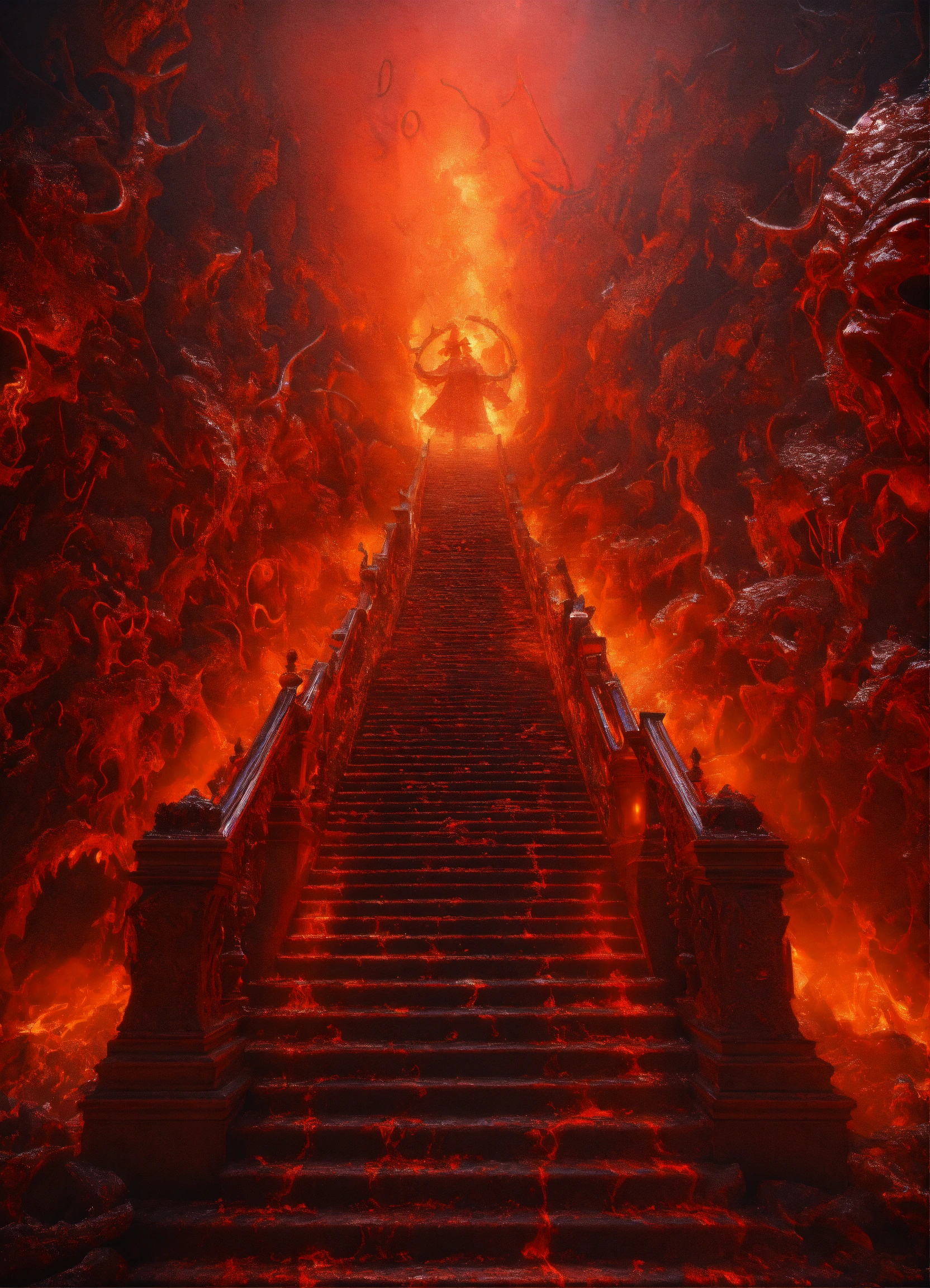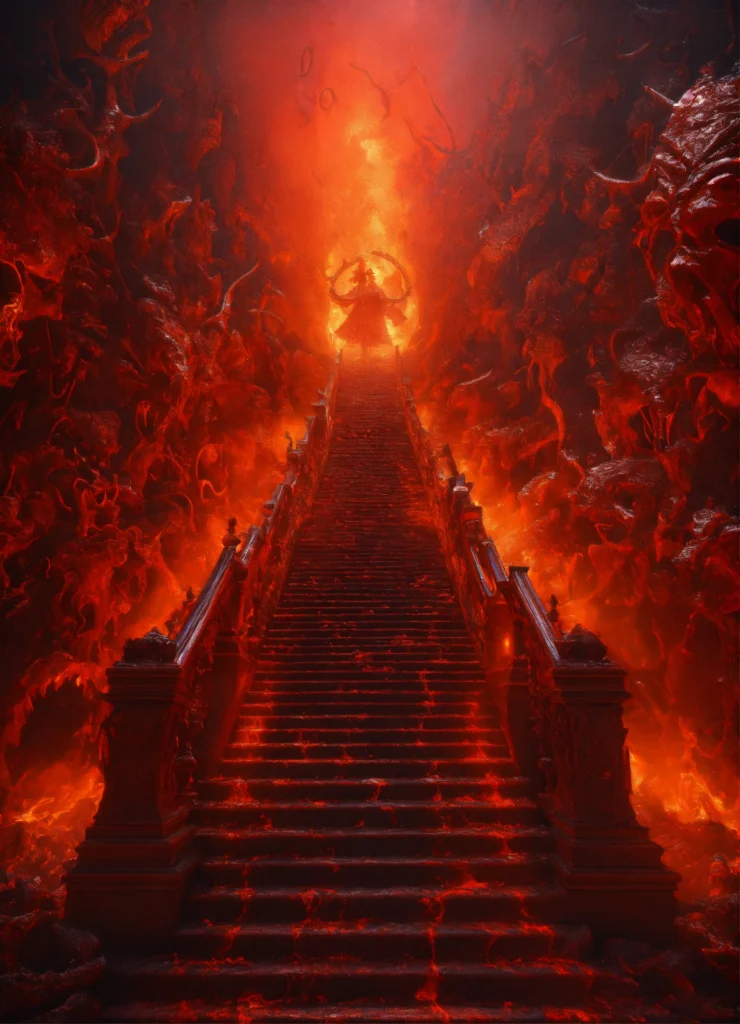Physical Address
304 North Cardinal St.
Dorchester Center, MA 02124
Physical Address
304 North Cardinal St.
Dorchester Center, MA 02124
With Michael Walker
With Michael Walker

A message to the New Creation….

The concept of “hell” as taught in most Western traditions is not found in the Bible. It is the result of linguistic flattening, mistranslation, and centuries of theological manipulation. The English word “hell” does not originate from Scripture at all. It is a later invention brought into English through Christianity, fusing together several distinct Hebrew and Greek words into one umbrella term. This collapsing of nuance created a single terrifying image that could be used to control people through fear.
In the Hebrew Scriptures, the word most commonly translated as “hell” is Sheol, which simply refers to the grave or the realm of the dead. It was seen as the destination of all who died, both the righteous and the wicked. Jacob, grieving the loss of Joseph, said, “Surely I will go down to Sheol in mourning for my son” (Genesis 37:35 NASB). Job pleaded, “Oh that You would hide me in Sheol, that You would conceal me until Your wrath returns” (Job 14:13 NASB). Psalm 16:10 says, “For You will not abandon my soul to Sheol; You will not allow Your Holy One to undergo decay” (NASB). These verses show that Sheol was not depicted as a fiery place of torment, but as a neutral, shadowy realm of death. When the Hebrew scriptures were translated into Greek, the word Sheol became Hades, maintaining the same general meaning — the temporary realm of the dead.
Later, in the New Testament, several distinct terms were all mistranslated into one English word: hell. Hades remained the general realm of the dead, but Yehoshua also used the term Gehenna, which referred not to a spiritual realm but to a literal valley outside Jerusalem known for fire and destruction. In Matthew 5:22 Yehoshua warned that “whoever says, ‘You fool!’ shall be guilty enough to go into the fiery Gehenna” (NASB). In Matthew 10:28 He said, “Do not be afraid of those who kill the body but are unable to kill the soul; but rather fear Him who is able to destroy both soul and body in Gehenna” (NASB). Here, “destroy” (Greek apollymi) means to bring to complete ruin — to strip away life, purpose, and function — not to erase from existence. Finally, there is Tartarus, mentioned only once: “For if God did not spare angels when they sinned, but cast them into hell [Tartarus] and committed them to pits of darkness, held for judgment…” (2 Peter 2:4 NASB). Tartarus is a spiritual prison for rebellious angels, not for humans.
The traditional image of “hell” as an all-purpose term owes more to medieval myth, Dante’s Inferno, and church tradition than it does to the Hebrew or Greek scriptures. Revelation speaks of a lake of fire, which is the second death: “Then death and Hades were thrown into the lake of fire. This is the second death, the lake of fire” (Revelation 20:14 NASB). The “second death” is not annihilation into nothingness — it is the eternal, conscious, and irreversible separation from the life, favor, and fellowship of God. This is the “eternal punishment” (kolasin aiōnion) that Yehoshua declared in Matthew 25:46, in direct contrast to “eternal life.” Both are equally everlasting in duration. The righteous will live in unending fellowship with God; the wicked will exist in unending punishment, outside His favor, yet within His unescapable sovereignty.
Ecclesiastes 12:7 says, “then the dust will return to the earth as it was, and the spirit will return to God who gave it” (NASB). For the righteous, this return is a restoration into His presence. For the wicked, it is a return only in the sense of ultimate jurisdiction — their very existence is held by the One from whom they are eternally estranged. They are not annihilated, nor reconciled; they are permanently contained under His authority in the Lake of Fire.
Scripture is also clear that there is a real place of torment prior to the final judgment. The story of the rich man and Lazarus makes this unmistakable: “Now the poor man died and was carried away by the angels to Abraham’s bosom; and the rich man also died and was buried. And in Hades he raised his eyes, being in torment, and saw Abraham far away and Lazarus in his arms. And he cried out and said, ‘Father Abraham, have mercy on me, and send Lazarus so that he may dip the tip of his finger in water and cool off my tongue, for I am in agony in this flame’” (Luke 16:22–24 NASB). This is the torment side of Hades/Sheol, a conscious state for the wicked dead. But this state is temporary. Revelation 20:13–14 says that Hades will give up the dead for judgment, and then be thrown into the lake of fire. The temporary holding place will be emptied; the final destination is the eternal one.
The man-made fusion of Sheol, Hades, Gehenna, and Tartarus into a single term “hell” allowed the Greco-Roman Catholic Church to weaponize the imagery. They institutionalized a distorted picture of God, portraying Him as an eternal sadist, and using that image to keep people compliant through fear. While the fear-based misuse was real, the biblical teaching on final judgment remains sobering: the Lake of Fire is eternal punishment for the wicked, just as eternal life is the unending reward for the righteous.
When Yehoshua died, He told the thief on the cross, “Truly I say to you, today you will be with Me in Paradise” (Luke 23:43 NASB). This confirms that Paradise, or Abraham’s bosom, was a conscious place of comfort for the righteous dead. The rich man and Lazarus account shows that Hades had two compartments: one of rest, one of torment. Yehoshua descended into the lower parts of the earth after death, proclaiming victory to the spirits in prison (1 Peter 3:18–19 NASB).
After His resurrection, He remained on earth for forty days, speaking of the Kingdom of God (Acts 1:3 NASB). His ascension was a victorious procession, disarming the powers of darkness (Colossians 2:15 NASB). Only after His ascension did He send the Holy Spirit at Pentecost (John 16:7 NASB), giving spiritual gifts to His people for the building up of the Body (Ephesians 4:11–12 NASB).
The dead in Messiah will be raised at His coming (1 Thessalonians 4:16–17 NASB). Until then, the righteous dead are “at home with the Lord” in a conscious state (Philippians 1:23 NASB), while the wicked await judgment in the torment side of Hades. After the Great White Throne judgment, both Death and Hades will be cast into the Lake of Fire — the second death — and the wicked will enter into their final, eternal punishment, never to be restored to God’s life or favor.
This is why the false, fear-driven caricature of “hell” must be dismantled — not to erase the reality of eternal punishment, but to restore what Scripture actually says. The truth is not less severe but more precise: the wicked face an everlasting state of conscious ruin under the justice of God. The righteous inherit an everlasting state of joy in His presence. Both are eternal.